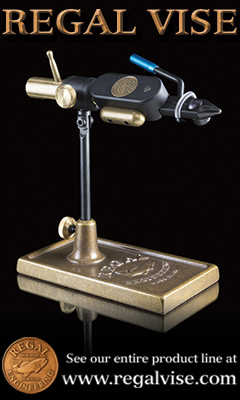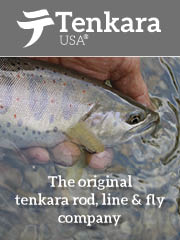 |
| Delaware River |
First a little about the fish themselves. When I refer to shad, I am, in fact, referring to American Shad, not to be confused with the slightly smaller Hickory Shad. Both species may be present at the same time in some watersheds. Shad are members of the herring family. These fish spend the vast majority of their lives in salt water, returning to freshwater to spawn, much like salmon. It is interesting to note that many shad survive spawning and return to the ocean in the northern part of their range. When I refer to freshwater, I mean rivers. Although the historical range of the American Shad has been reduced due to dams and pollution, shad can be found in most major river drainages along the eastern seaboard including Florida and Nova Scotia. Originally native to only the east coast, shad were transported to our western shores in the 1800's where they took to the Pacific Ocean like a fish to water. West coast runs of shad in some rivers may, in fact, be larger than runs in their native rivers back east.
A female shad is typically larger than males. Their average weight is 3-6 pounds, but they can run quite a bit larger. The current IGFA all tackle record is a hefty 11lbs 4oz. Male shad typically range in the 2-4 pound range. Shad are feed mostly on plankton like other herring, but they have been known to consume shrimp, small fish and fish eggs. It is puzzling why shad readily take flies and other lures, being the plankton feeders that they are. It could be out of aggression or perhaps simple curiosity. Fortunately, we don’t need to worry about why they hit flies, just be confident that they do.
When shad enter freshwater, they are doing it for one reason, and that is to spawn. Depending on where you are located this can occur anytime from late winter to early summer. In my area, the major fishery is the Delaware River. In most years the fish are in the rivers in catchable numbers by late March. Once in the rivers, the fish are constantly on the move towards their spawning grounds which could be hundreds of miles upstream and into tributaries along the way.
Shad tend to orient themselves to the river bottom, sticking close to it as they move or rest in the river. They often tend to stick to river channels, but occasionally can be found in shallow water. Shad also tend to congregate behind obstructions in the river, using the break in the current to rest before pushing up the river. Shad gather in schools in the marine environment, so if you locate one fish, you are likely to connect with more. In the rivers, shad behave differently than they do in salt water in regards to forming schools. In freshwater, a school of shad is more likely to be a long narrow line of fish opposed to a dense school. They move upstream in conga line fashion instead of a large pod of fish.
If your are trying to locate shad, you need to keep these facts in mind. You are going to need to present your fly in a manner that it gets down in the water column, real low, just over the bottom low. You will probably have more success if you can locate structure in the river that will provide a break in the current if you are looking for a concentration of fish. Keep in mind that these fish are on the move constantly so you may find them anywhere. Finally, you want to be able to reach the main channel with your cast as the fish tend to seek out the deeper water of the main channel more often. Find a location that gives you one or more of these features and you're likely to catch shad if they are there.












No comments:
Post a Comment